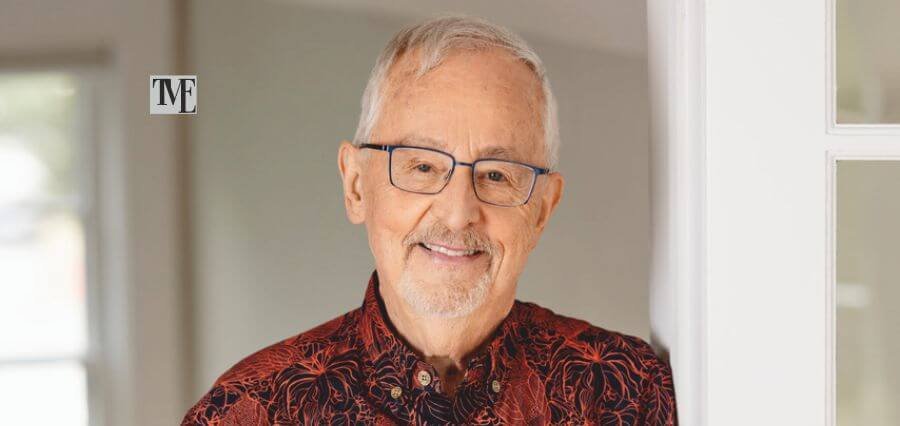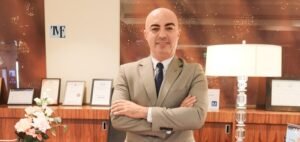Richard “Dick” Charles Larson’s life and career are a testament to the transformative power of data, systems, and human-centered design. As an engineer, scholar, and educational innovator, Richard Larson has consistently worked at the confluence of theory and real-world application. His story is not just about solving equations or designing models; it is about improving urban service systems, making education more accessible, and preparing societies for future uncertainties. His decades-long journey reflects a profound commitment to using operations research not merely as a tool for optimization, but as a force for social good.
Throughout his storied career, Larson has combined intellectual rigor with social empathy. Whether designing optimal emergency response systems, helping governments plan for disasters and pandemics, or reimagining the delivery of education through digital platforms, Larson’s work embodies the very ethos of MIT’s mission: “Mens et Manus” — mind and hand. With over 175 scientific articles, six books, and international recognition to his name, his influence spans far beyond academia, reaching policymakers, corporate leaders, and learners around the globe.
In the following sections, Larson’s own words and achievements will guide readers through the evolution of his work — from his early days in urban operations research to his later efforts to democratize STEM education. As recounted by Richard Larson himself, this narrative captures the motivations, challenges, and innovations that have shaped one of the most impactful careers in operations research.
Early Foundations and Academic Roots
Richard Larson was born in 1943 in Bayside, Queens, New York City, and spent his formative years moving between towns in Pennsylvania and New Jersey. By the time he reached high school in Needham, Massachusetts, his fascination with systems and problem-solving had already taken root. This led him to the Massachusetts Institute of Technology (MIT), where he earned his Bachelor’s, Master’s, and Doctoral degrees in electrical engineering between 1965 and 1969.
Reflecting on those years, Richard Larson often credits MIT not just for the academic training, but for fostering his innate curiosity and giving him a platform to explore the real-world implications of research. “MIT taught me to blend analytical precision with purpose,” he has said. This dual focus became a central theme throughout his career.
Embracing Urban Systems and Public Service
Larson’s early professional work was deeply influenced by his association with the RAND Corporation in the late 1960s. Here, he began exploring how data and mathematical modeling could enhance emergency services in large urban settings. His groundbreaking research in New York City laid the foundation for modern dispatch systems used by police, fire departments, and emergency medical teams.
Richard Larson explained, “Back then, it wasn’t just about improving response times. It was about building systems that could adapt and serve diverse communities under stress.” His book Urban Police Patrol Analysis, published in 1972, became a seminal work in the field and earned him the Frederick W. Lanchester Prize. The core idea? That operational models could improve safety, equity, and efficiency simultaneously.
Leading the Professional Frontier
As a recognized thought leader in operations research, Richard Larson took on leadership roles in organizations like ORSA (Operations Research Society of America) and later INFORMS (Institute for Operations Research and the Management Sciences). Serving twice as president, he was pivotal in shaping how the field adapted to 21st-century challenges. He was named a founding fellow of INFORMS in 2002 and received prestigious accolades like the George E. Kimball Medal and the INFORMS President’s Award.
“Leadership in academia isn’t about status,” Larson said. “It’s about stewardship — guiding a field so it remains relevant and impactful.”
The Science and Psychology of Waiting
Few researchers become public figures, but Larson’s reputation as “Doctor Queue” captured public imagination. His expertise in queueing theory — the science behind waiting lines — led him to analyze everything from supermarket checkouts to call centers and hospital ERs. But what made Richard Larson unique was his focus on the psychology of waiting.
“People hate uncertainty more than delay,” he often observed. His insights gained media attention through National Public Radio, The Washington Post, and countless public speaking engagements. His ability to distill complex mathematical ideas into relatable stories made him both a respected academic and a public intellectual.
Innovating Education with Technology
In the mid-1990s, Richard Larson began a new chapter focused on education. As Director of MIT’s Center for Advanced Educational Services from 1995 to 2003, he worked to use digital platforms to make world-class instruction more widely accessible. He spearheaded projects like the Singapore-MIT Alliance for Research and Technology, which blended online and on-site learning long before the era of MOOCs.
Richard Larson said, “Technology isn’t a silver bullet, but it can be a great equalizer when used thoughtfully.” This belief would lead to one of his most impactful ventures: MIT BLOSSOMS.
BLOSSOMS: Global STEM Learning Reimagined
As the Principal Investigator of MIT BLOSSOMS (Blended Learning Open Source Science or Math Studies), Richard Larson brought free, high-quality STEM video lessons to classrooms around the world. These short, engaging modules — co-created with teachers and scientists globally — revolutionized how science and math were taught in resource-constrained environments.
“I wanted to create something scalable, sustainable, and socially inclusive,” Larson explained. Through BLOSSOMS, he worked directly with educators in over 20 countries, spreading not just knowledge, but a model of collaborative learning. Alongside his late wife Mary Elizabeth Murray, he gave numerous international seminars, passionately advocating for educational equity.
Building Global Learning Communities
Richard Larson also founded the Learning International Networks Coalition (LINC), a professional society aimed at improving education through global collaboration and digital innovation. “We live in a world where talent is universal, but opportunity is not,” he remarked. Through LINC, he envisioned a future where educational opportunity could transcend borders, languages, and income levels.
The LINC initiative became a hub for policymakers, educators, and technologists to exchange ideas and share best practices in technology-enabled education. “It’s about building bridges,” Larson said, “between countries, disciplines, and perspectives.”
Service Through Advisory and Consultancy
Throughout his career, Richard Larson has also served as a trusted advisor and consultant to numerous organizations — from the U.S. Postal Service to the City of New York. He brought academic insight to real-world systems, whether optimizing mail delivery routes or enhancing disaster response strategies.
He emphasized, “The true test of any model is how well it works in messy, unpredictable environments. That’s where research meets reality.”
His election to the National Academy of Engineering in 1993 was recognition of these cross-sector contributions.
Awards That Reflect a Purpose-Driven Life
Larson’s accolades — including the Daniel Berg Lifetime Achievement Medal in 2017 — are not just symbols of personal success. They are reflections of a life spent advancing public service, technology innovation, and strategic thinking. From police analytics to pandemic preparedness, his research has consistently addressed high-stakes problems with real human impact.
“I never chased awards,” he shared. “I chased good questions — ones that matter to people.”
Personal Life and Lasting Legacy
Richard Larson’s commitment to education is not only professional but deeply personal. His passion for technology-enabled learning was inspired, in part, by observing how his own three children engaged with emerging technologies in the 1990s. Alongside his late wife, he delivered lectures and seminars promoting the BLOSSOMS initiative in diverse international contexts — from rural classrooms to global summits.
Today, as Professor Post-Tenure at MIT, Richard Larson continues to mentor young scholars, serve on academic boards, and develop new educational tools. His intellectual legacy is matched only by his humanitarian one: the belief that knowledge, when shared freely, can uplift lives across the globe.
A Legacy of Impact Across Domains
Richard Larson’s contributions span urban planning, emergency services, queueing theory, education, and global development. But beyond the papers, awards, and titles lies a deeper truth: Richard Larson has dedicated his life to making complex systems work better for people. In a world full of data, he reminds us to never lose sight of human needs.
Whether developing algorithms to reduce 911 response times or creating free math lessons for underserved classrooms, Larson’s work is rooted in empathy, equity, and excellence. As the world grapples with new crises — climate change, pandemics, digital divides — his legacy serves as a guiding light for how science can be a service.
From engineer to educator, from “Doctor Queue” to global advocate, Richard Larson exemplifies what it means to turn knowledge into meaningful action.





